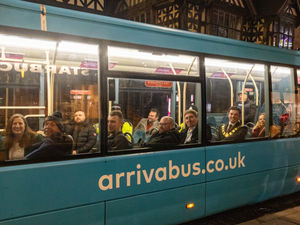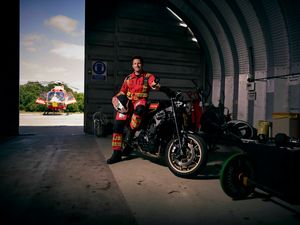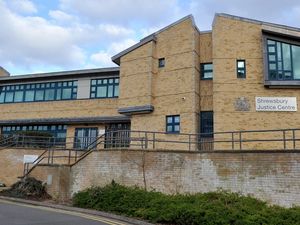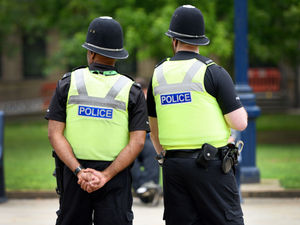Shropshire photographer's images of poverty that shocked Britain
[gallery] They were photos which shocked Britain. In the so-called Swinging Sixties, there were people living in unimaginable squalor and poverty.
These pictures brought home the terrible housing conditions many families were having to endure in Britain's big cities in the late 1960s and helped energise the movement to make things better.
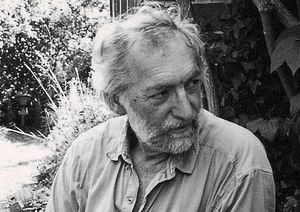
And now those striking images, taken by Nick Hedges who is now 70 and living in Shrewsbury, are being shown in a new exhibition at the Science Museum in London.
Mr Hedges was working at the time as a photographer for the housing and homelessness charity Shelter and the photographs were used both in its regular reports and widely in the contemporary media.
"I felt quite proud one day when somebody at, I think, a Labour or Liberal annual conference held up the Shelter report and opened it to a photograph of mine, showed it to delegates, and said: 'This is unbelievable. This should not be happening these days'. It made me feel that the message was getting across," he said.
"I went around the country taking photographs about different housing problems that existed in most of our large cities. I went to Liverpool, Manchester, Birmingham, Bristol, Cardiff, Newcastle, Leeds, Bradford, Glasgow and Edinburgh.
"I used to use my own initiative, but also worked with local housing trusts in those cities. It was a combination of working with them and with local social services and literally walking around the streets and meeting people and discussing their difficulties and going to take photographs. I was finding back then, which was 1968 and 1969, that the living conditions in which some people were forced to live were absolutely shocking.
"What had happened nationally is that the Second World War had actually delayed a lot of the slum clearance. There were a lot of people living in properties which had been condemned in the 1930s which still had not been cleared.
"I met a woman and her daughter living in the cellar of a multi-let house in Liverpool. There was no daylight. The room was not designed to be lived in. It was almost as if they had taken shelter there from a bombing raid. It was awful .
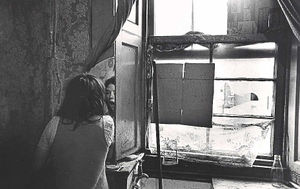
"You found other families living in conditions where they were so poor that there was no bedding for the children's beds. They would sleep on an iron framed mattress on a cushion and their mother would put them to bed with a mac over them and this was in the middle of winter.
"In general, Shelter reckoned there were probably three and a half million people living in those kind of conditions, which was a big proportion of the country.
"I believed quite strongly that it was important that people knew about the conditions in which a large number of people lived in this country. "
Generally, he found those living in those conditions happy to co-operative.
"They knew that the conditions they were living in were awful and were prepared to help let people know that this was the case, without necessarily any rewards, by which I mean there was not a relationship which said that if you co-operate with us and allow us to take photographs and do interviews, you will be rehoused. That was not the case at all."
Mr Hedges's photographs have been in the archives of the National Media Museum in Bradford, which is part of the Science Museum.
"The pictures were rediscovered by a Dutch curator who was looking for something else at the museum in Bradford and came across my photographs," he said. "She was overwhelmed by them and thought they should be shown. I was consulted about the exhibition. They ran the edit they had chosen past me and I was able to say that I thought one or two of the photographs were less relevant, let's put it that way, than others. They wanted me to write something for the catalogue, which I did, and I made a small speech at the opening."
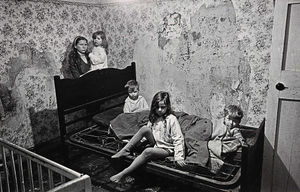
Mr Hedges moved to Shrewsbury in 1986 and is now retired. He was born in Bromsgrove and went to the School of Photography at the Arts School in Birmingham.
His association with Shelter, he says, was a fortunate accident. He was in his final year as a student and his photographs were being used in an exhibition for the Birmingham Housing Trust to draw attention to the state of housing in the city.
"I was sitting in the offices of the housing trust one day literally wallpaper pasting these very large photographs onto boards. Someone put his head around the door and had a look at them and said they were nice photographs and then disappeared.
"About three weeks later I got a phone call. It happened that the man who had put his head around the door was the director of Shelter and he offered me a job in London to work for them. They were beginning to want to raise their national profile. There had been a lot of publicity with the TV drama Cathy Come Home and they were starting their own unit, a photographer, journalist, and graphic designer, to produce material in-house rather than using freelances. I worked as a photographer and a researcher."
He left Shelter towards the end of 1972 and on his move to Shrewsbury in the 1980s had a job at Wolverhampton University running the photography degree.
He donated 1,000 of his Shelter photos to the National Media Museum in 1983, but until now their use has been restricted to protect the privacy of his subjects.
* The Making Life Worth Living exhibition opened at the Science Museum on October 2 and runs to January 18.

